Imagine this: you are selling your private label product, and right before you are about to grasp your customer’s outstretched hand of money, a better offer appears… “Are you sure you want that product?” Here is an offering that is higher quality, more affordable, and just better. You’re like WTF?!
If you are able to master Amazon Marketing Services (AMS), this is a scenario that you can replicate time and again in a variety of targeting methods. You can literally tempt your competitor’s customers to purchase your product instead. Sounds pretty cool, right?
Today we are going to review Amazon Marketing Services, a pay per click Amazon platform in which you can get your product in front of the relevant visitor, based on keywords, products, or even shopper interest and category.
Here is the video replay–this session is particularly helpful to watch, as Greg demonstrates an over-the-shoulder demo of creating an AMS account and initial campaigns:
And here are the slides:
[Disclaimer: Amazon no longer has the Vendor Express program. However, you can still set up an account with Amazon Marketing Services so long as you’re an Amazon seller. Currently, the biggest advantage that using AMS over just using Seller Central is that it gives you access to product display ads.]
Amazon Marketing Services: How To Qualify
AMS is accessible to anyone in the Vendor Express program (see disclaimer above). Vendor Express is a program in which manufacturers sell products directly to Amazon, and Amazon becomes the seller (you know those products that note “Ships from and sold by Amazon.com”).
For private label sellers, the downside of participating in the Vendor Express program is that you forego control of your product listing. Amazon controls your listing, so you are no longer able to run split tests, optimize your listing, test pricing, etc. Because of this, I advise that you DO NOT send them your main product or best product. Either create a new sacrificial product or create a bundle (e.g. we could create a 5 pack of our Jungle Snugs and send them that).
Getting into the Vendor Express Program is a 4 step process:
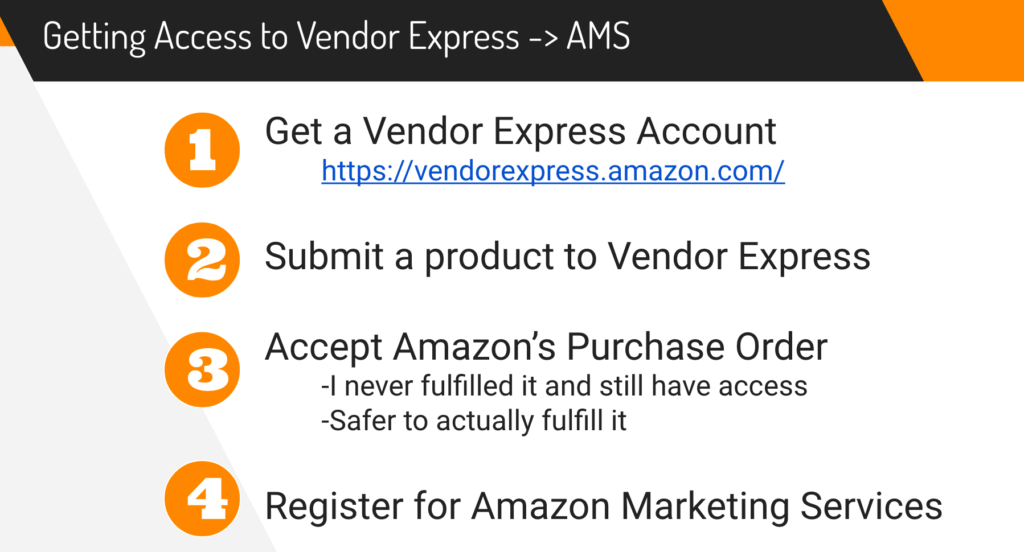
After submitting your product to Amazon, they’ll give you a PO which you should fulfill. Once that happens, you can access the various programs: Sponsored Product Ads, Product Display Ads, Headline Search Ads, oh my! And this is where fun begins…
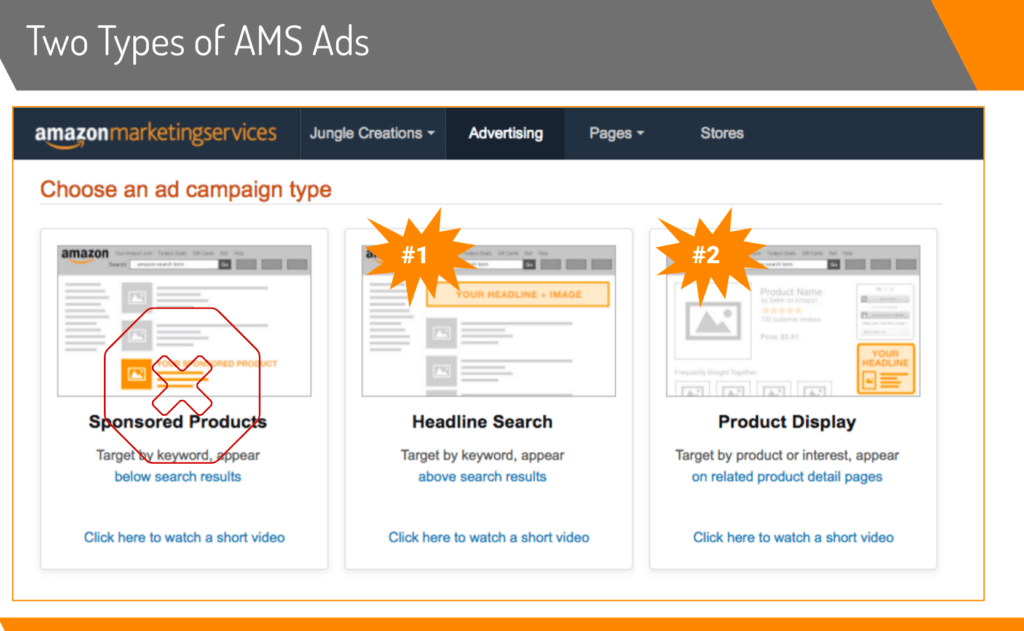
In this session, we will focus on Product Display Ads. In the next Million Dollar Case Study Session (#21), we will cover Headline Search Ads. Both of these marketing tactics can be accessed by signing up for AMS as explained above, and logging in to the AMS website here.
Remember that Sponsored Products, the third pillar of AMS, can be managed from within your usual Seller Central login. For more information on Sponsored Products, we have previously covered advanced tactics here and the setup basics here.
Product Display Ads
Let’s take a look at what these ads look like in Amazon. The reason these ads are so cool is that your product will appear by the checkout button, like this:
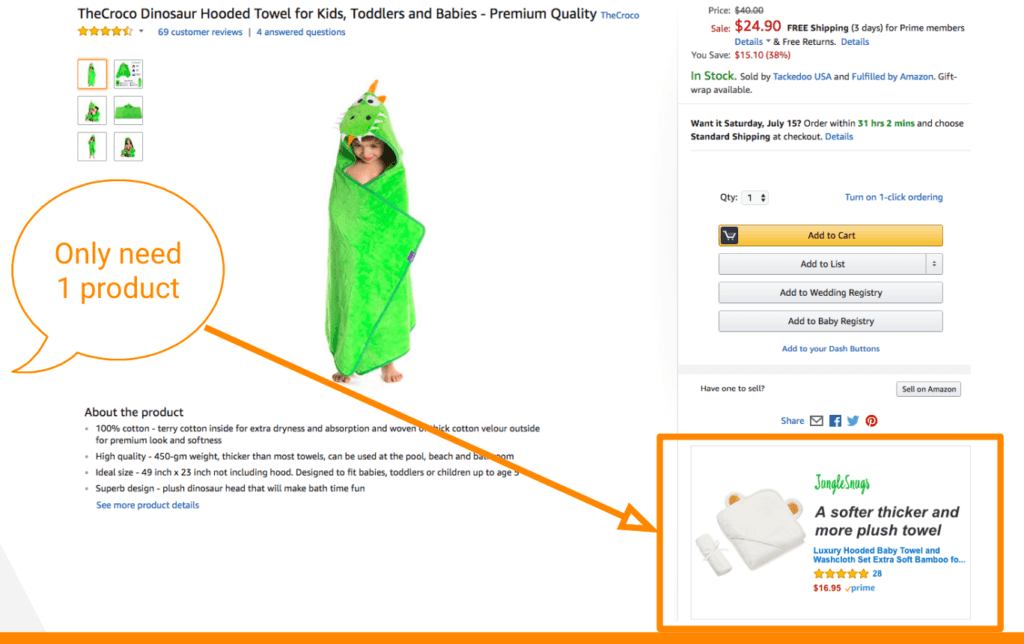
Here’s the different styles that you would need to create, that can appear in different places on Amazon to visitors:
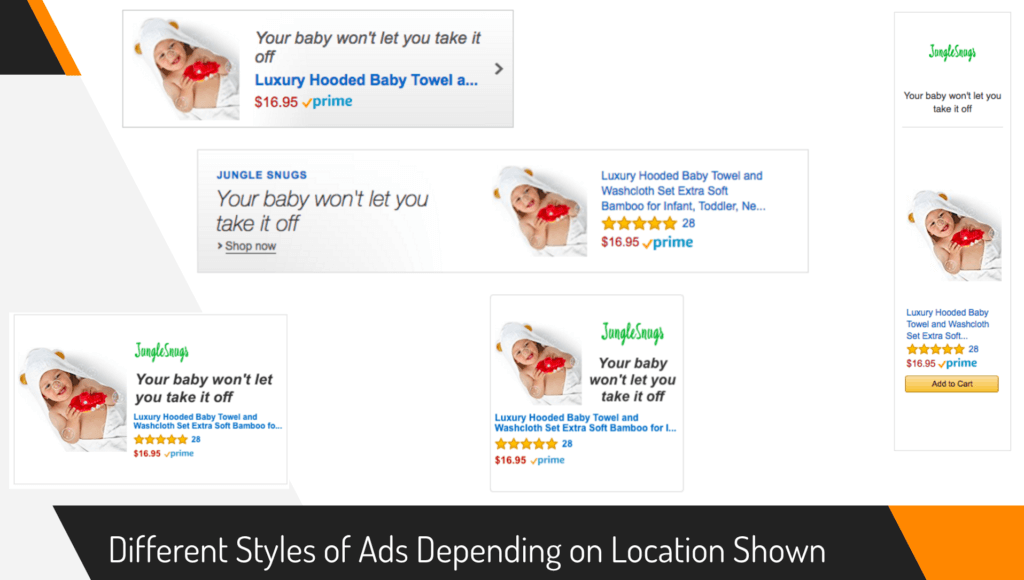
As you can see, these are well-placed, visual ads. The main benefit? To divert attention from a visitor who is about to purchase a product. So how do you create these campaigns to be highly targeted and effective? Glad you asked!
Creating Your AMS Campaigns
For Product Display ads, you can target your ads on competitive products (for example different baby hooded towel sellers), or complementary products (i.e. have your ad appear on product listings of bath toys, baby shampoos, or the like).
In order to do this, you want to find the ASINs of these products that you want to target. The easiest way to do this is to pull the ASINs with the Jungle Scout Chrome Extension. Of course, you can manually cherry-pick the ASINs as well.
The benefit of exporting with Jungle Scout is that you can also filter out the ASINs that would be less likely to be profitable. When creating his campaigns, Greg only targeted products that were more expensive (the logic being that they would be more inclined to be swayed to buy a cheaper product, that has a higher rating). He also decided to target products that sell more than 100 units per month according to the extensions useful sales estimates.
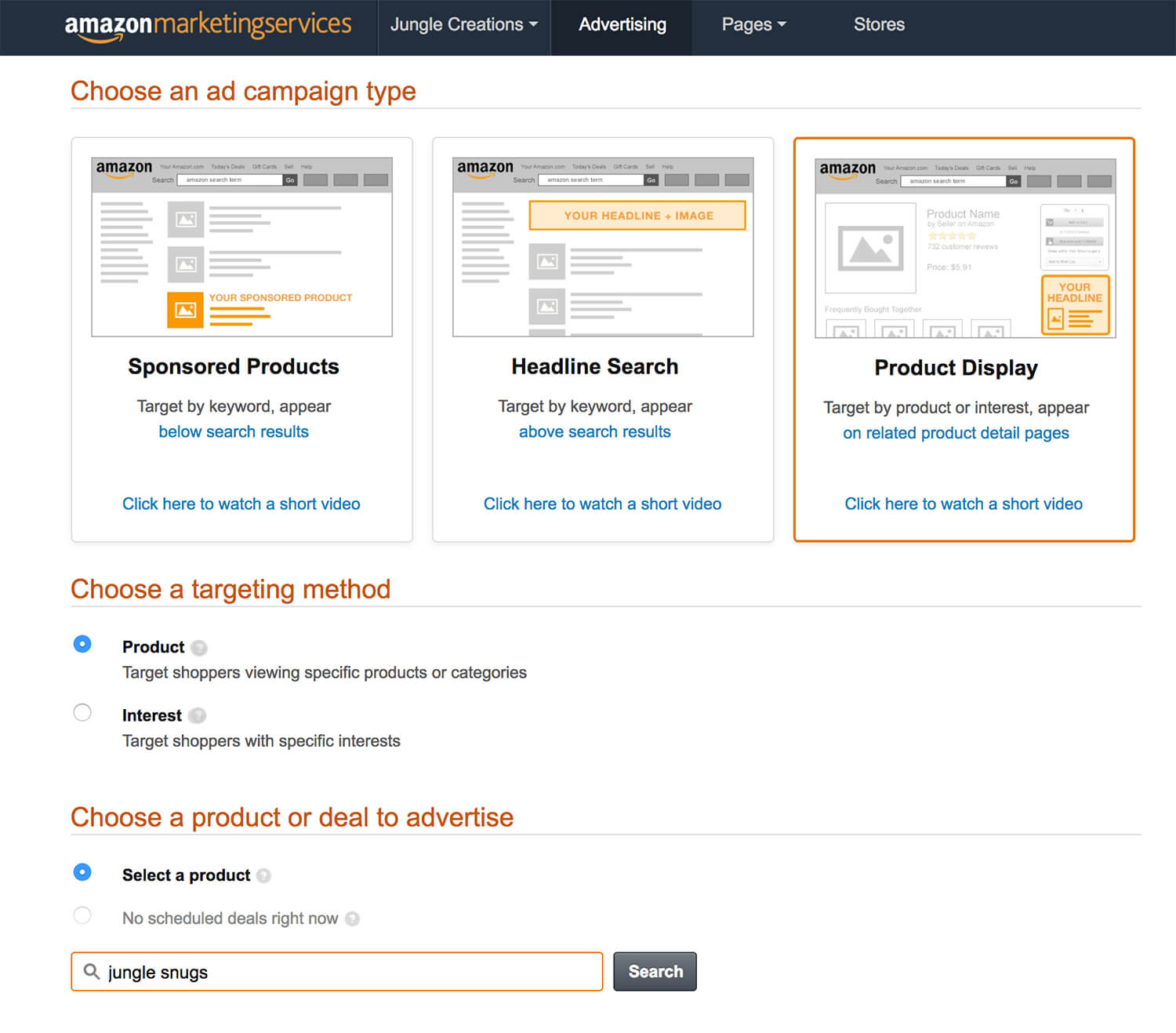
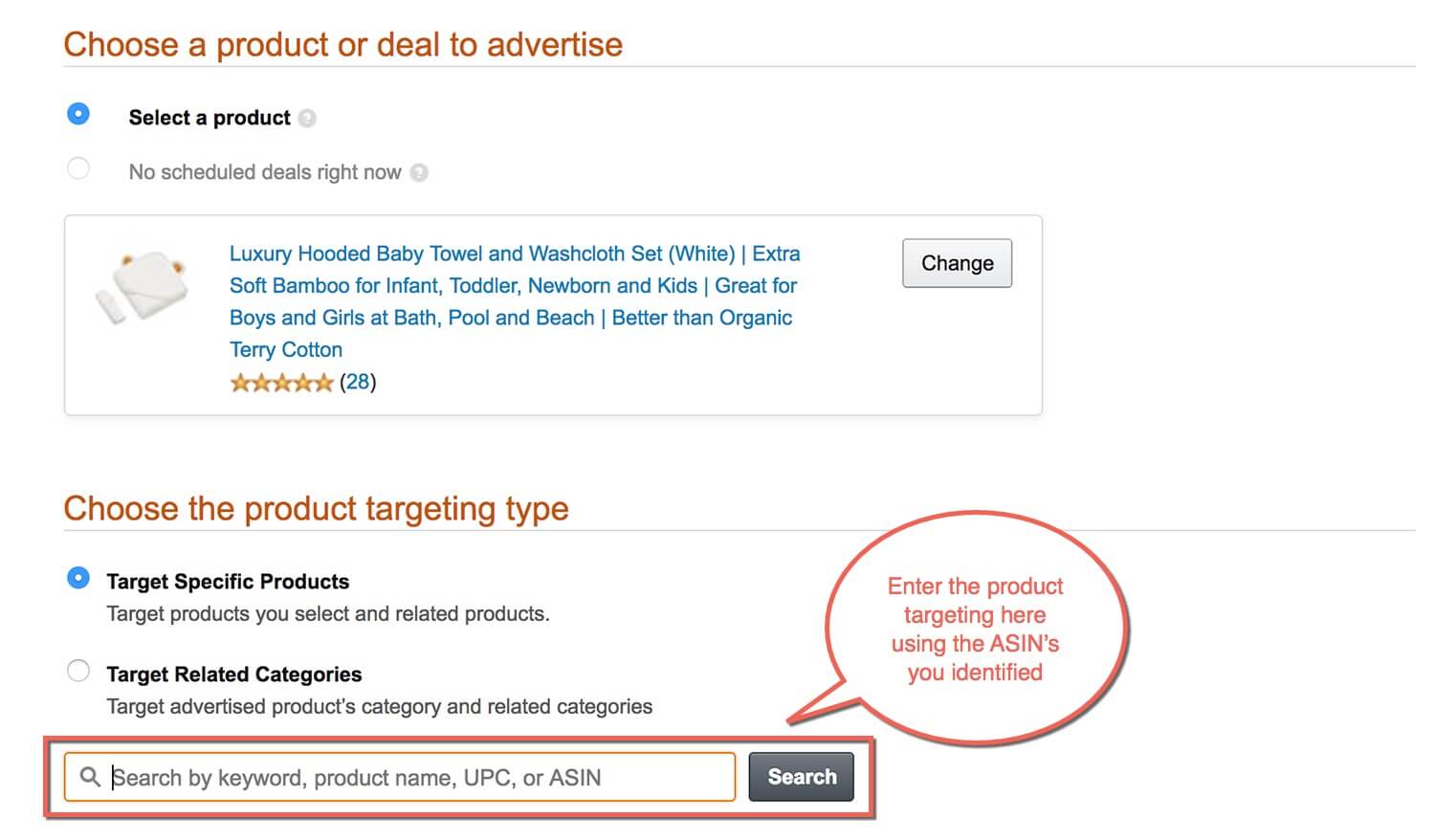
Once you have selected the ASINs you would be targeting (screenshot above), you want to create your Headline, Brand Name, Product Description, Logo, daily bids and budget. It’s fairly straightforward, as you can see below:
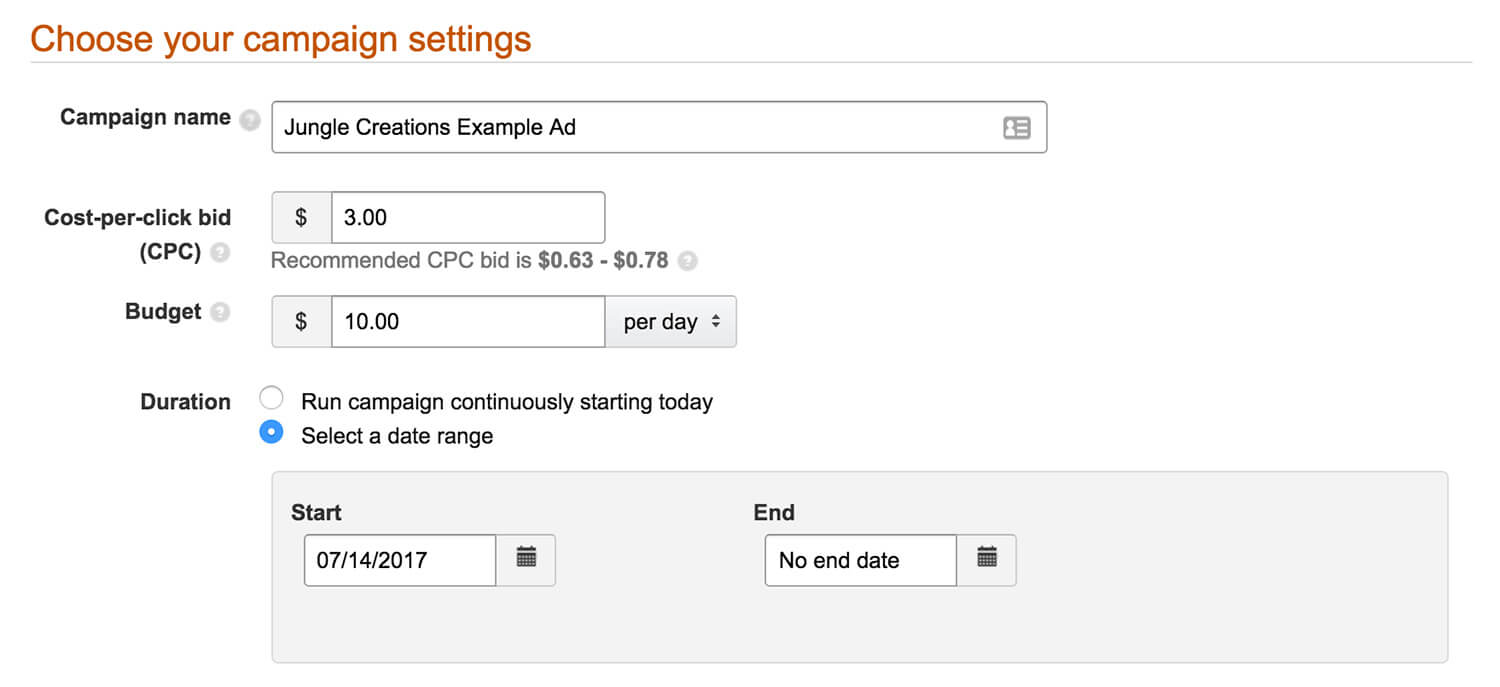
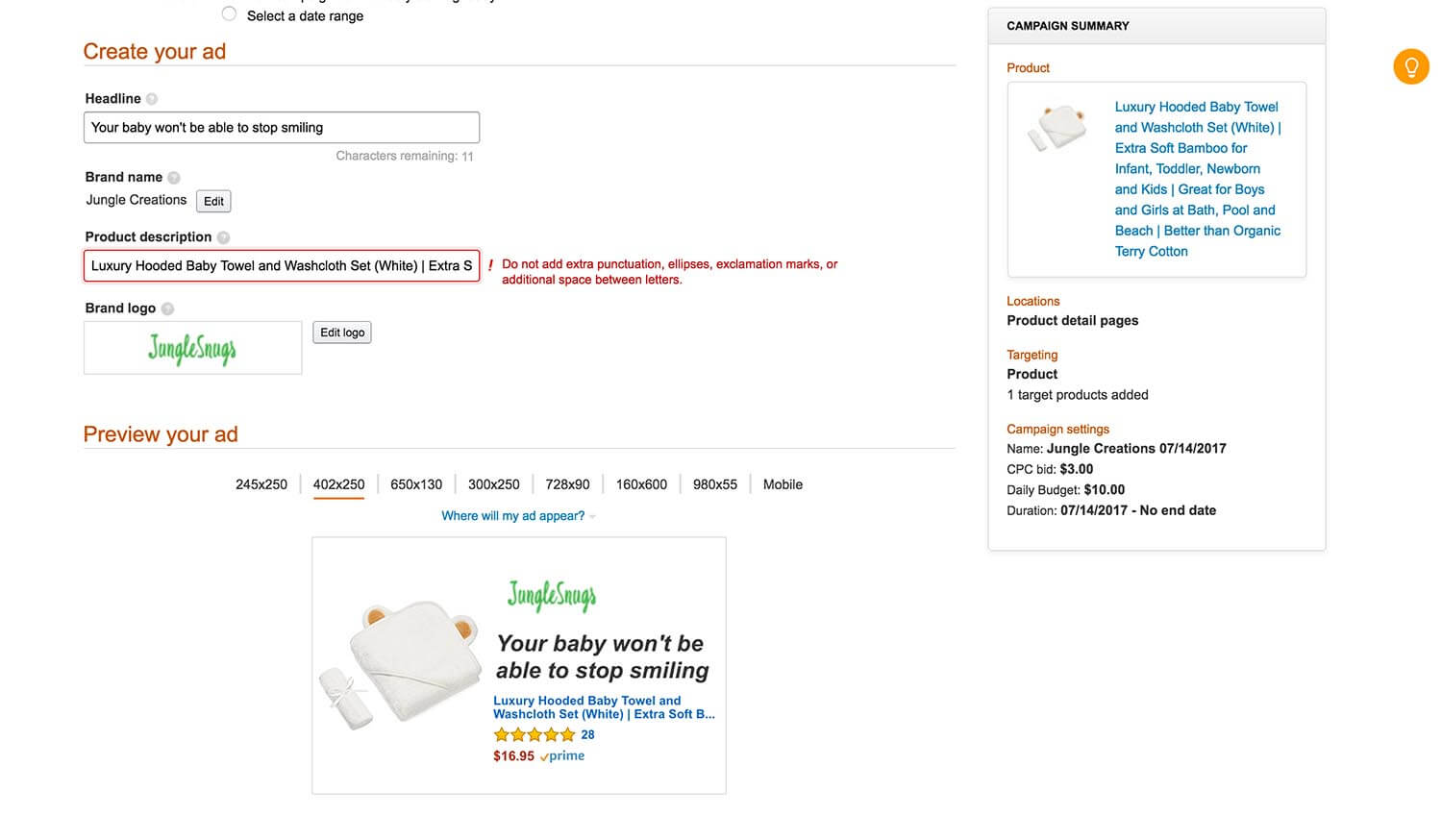
Tip: If you are on a limited budget, one way to keep your costs down is to use low bids and a modest daily budget, like $0.50 cost per click and $5 per day. It would take you longer to gather data, but you can maintain more control on your marketing spend.
How To Create Compelling Copy
AMS ads offer you a greater capacity to create compelling ads and copy that are more visual than Sponsored Product ads.
Plus, whereas Sponsored Products only allows you to bid on a keyword, AMS ads allow you to bid on the products and interests. For all those copywriters who lamented the restrictions of Sponsored Products, it’s now your time to shine!
Here are some of the best practices and policies that Amazon suggests when creating your AMS ads.
To make sure your headline passes review, use the following tips:
- Start with a capital letter
- Don’t use multiple punctuation marks or special characters
- Don’t include pricing information
- Don’t use forceful phrases, all capital letters, or exclamation points. For example, “Don’t miss out!” Or, “HURRY! SAVE NOW!!!”
- Don’t use unsupported claims. For example, phrases like “best’, “top selling” or “healthiest” are unsubstantiated and will not be approved.
Brands and products with special formatting exceptions will be considered. Review may take up to 72 hours.
When it actually comes to putting together your sales copy for your ads, here is some great advice:
- Unique Selling Proposition
- Thicker/Larger
- Better Quality
- Bonus/Bundle
- The first, the original
- Price
- Cheaper
- Complementary Product
- The perfect complement to ________
- _______ helps ______ do ______
It is most important to create the copy from the viewer’s perspective. What product would they be purchasing? (Think about which ASINs you are targeting too). What would their desires, objections, needs be? How can you intercept their path towards purchasing another product and ensure that they also add your product to the cart?
Highlighting the unique selling proposition is where you will win
Here are some of the examples that Greg came up with for Jungle Snugs, both the accepted headlines and rejected headlines:
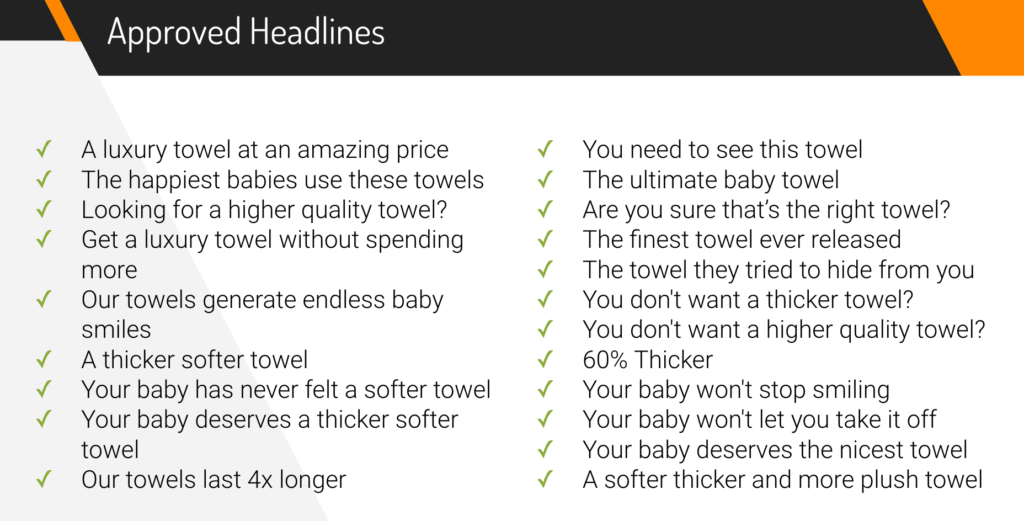
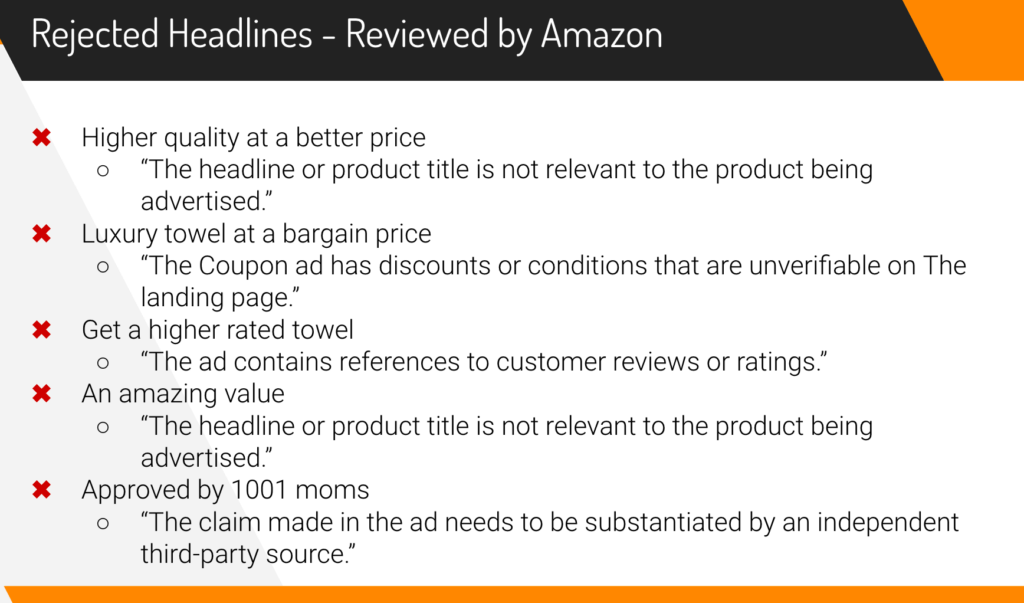
A Note About Organizing Your Campaigns
AMS offers limited data and editing options for changing a campaign once it has started. For example, even if you target multiple ASINs with an ad, Amazon’s reporting will only show you the aggregate data. So you will not be able to identify how each particular ASIN performed as far as costs, click-through rates, and ultimately Average Cost of Sale. This is vital information for creating profitable and well-optimized campaigns.
The solution is to use only one targeting method per campaign. So only use one ASIN, or customer interest, or related category per a campaign.
You will also not be able to change your ad content once the campaign has started, so you would need to create new campaigns to try new content.
The good news is that you can duplicate the campaigns and just swap out the ASIN, interest, or category so you can speed up the process of creating campaigns.
Adopt A Good Naming Convention Early!
This means naming your campaigns will become very important. It’s best to stay organized from the outset because you will soon end up with several campaigns. Here is the naming convention that Greg uses and recommends:
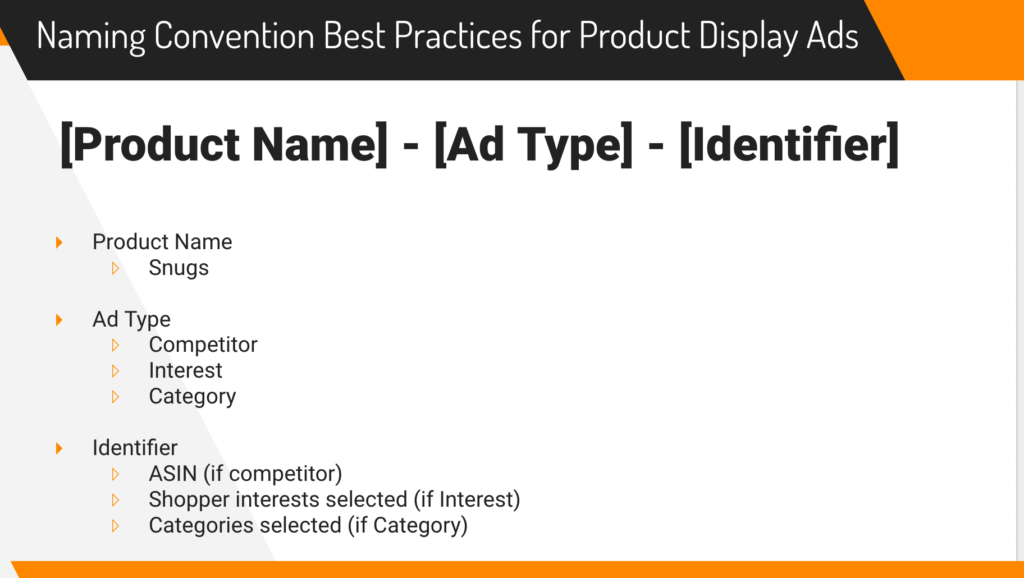
Another important note: Just like Sponsored Product ads, it takes Amazon 48 hours to report sales. This means that sometimes campaigns may look to be unprofitable at the outset, but may be because attributed sales are not yet reported. So sit back and be patient and let those attributed sales populate!
Next up: AMS Part 2
That concludes part 1 of our deep dive into Amazon Marketing Services.
The next session will cover Headline Ads, which can be incredibly cost-effective and profitable. Looking forward to seeing you there. If you have any questions about Product Display Ads, please drop them in the comments section and we’ll do our best to answer them!
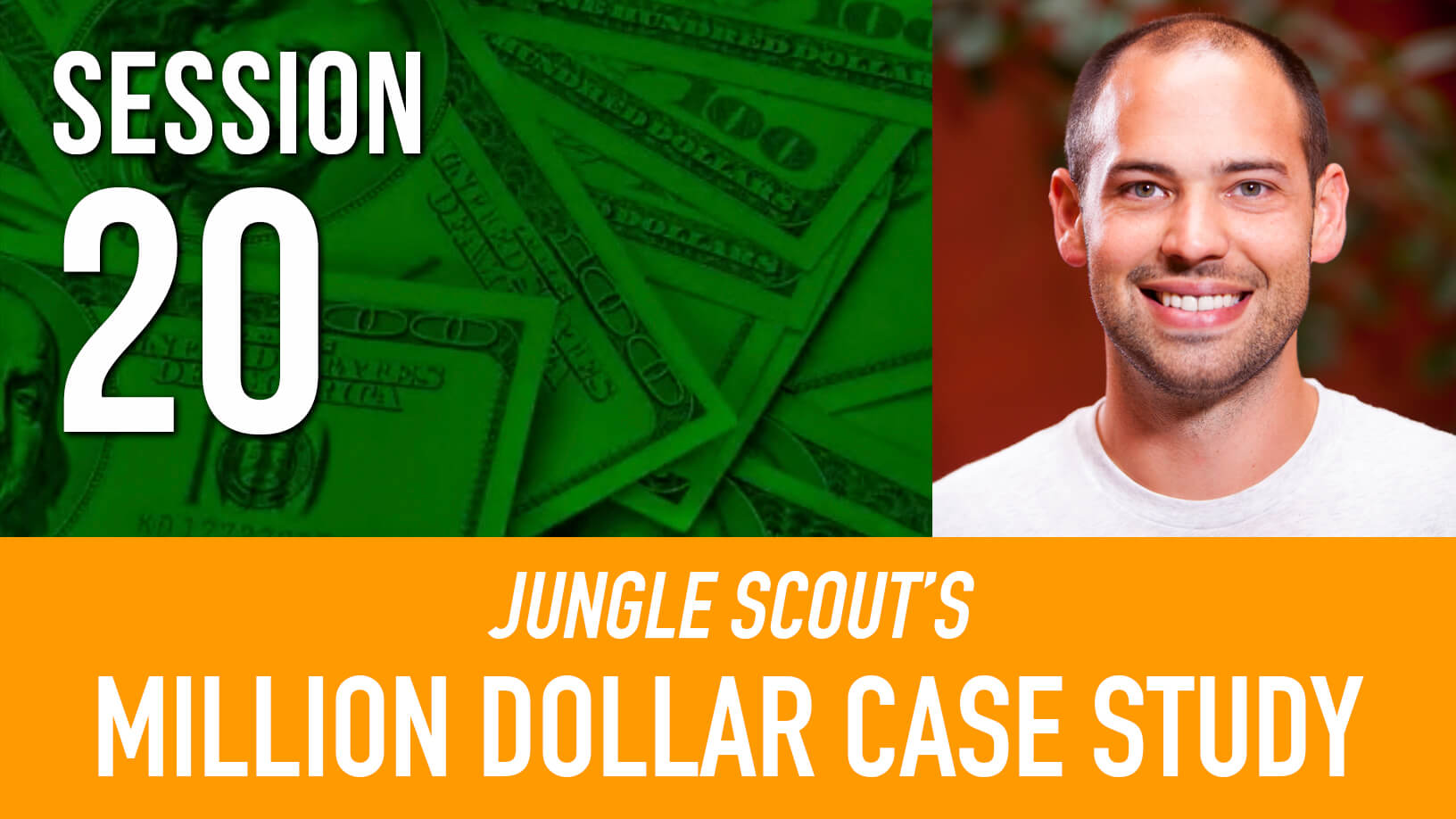
 4 Comments
4 Comments
4 comments on “The Million Dollar Case Study Session #20: Amazon Marketing Services Part 1/2”